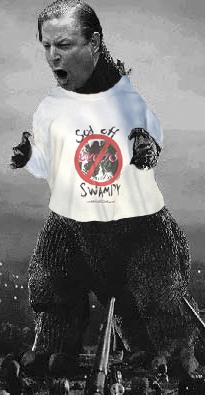There’s More to Ethanol
…than just corn.
City officials in Champaign and Urbana took notice when they heard that an ethanol plant proposed nearby would use about 2 million gallons of water per day, most likely from the aquifer that also supplies both cities.
“There was concern about impacting a pretty valuable resource,” said Matt Wempe, a city planner for Urbana. “It should raise red flags.”
There are green NIMBY issues to consider as well, in the rush to alternative fuels.

Ethanol from corn is a bad idea. One good drought reducing the corn harvest will make current oil prices look like spare change.
I was thinking that as well, Gunny. One Mother Nature swipe of biblical dust bowl magnitude could jack everything up ~ from no corn to no water to process what corn you had left. And that would be bad.
But people don’t think about the corollary things that have to be available for the next great idea. Ethanol’s great, but it doesn’t come out of thin air. What does it take ~ materials AND infrastructure wise ~ to make it. And then what is that cost to the environment.
“On a statewide scale, it’s not a huge amount of water,” says Allen H. Wehrmann, director of the Center for Groundwater Science at the Illinois State Water Survey. “Illinois is a fairly water-rich state, so I don’t think this is going to drain us.”
From personal experience, I can state that this is not completely true. Anyone with a shallow well (less than 60 feet or so, easy to do, thanks to the soil there) in central Illinois is f***ed during a drought, especially when in the vicinity of a major water user. I had to build an emergency water supply for one small, unincorporated town during the 1988 drought; all of their shallow wells went dry, thanks to the major agricultural irrigation going on.
I think that most of the shallow wells are going away, but that only means EVERYONE (or nearly so) is drawing from the aquifer, instead of surface water. Thus the water will draw down faster. I don’t know that aquifer’s recharge rate, but it’s not unlimited.
Yep, there’s a dark side to everything. Even grass eating goats have to go poo now and then.
We have a similar issue in SW Minnesota with the aquifer that is shared across a few states. The demand is there to build more ethanol plants but lack of water is holding them back. There is plenty of water in the rest of the state but I think there are regs that prevent taking it from one watershed(if that’s the right term) for consumption in another.